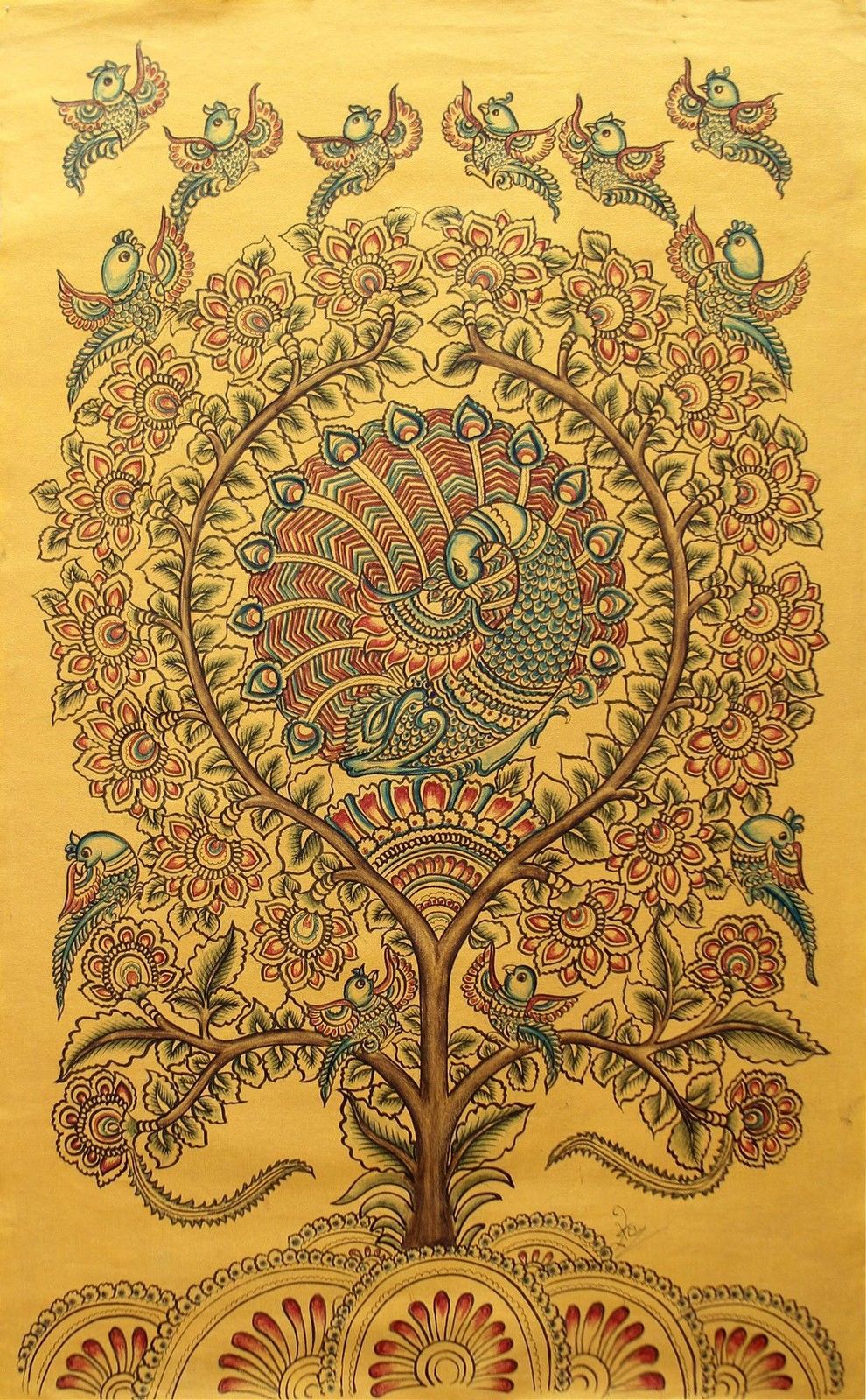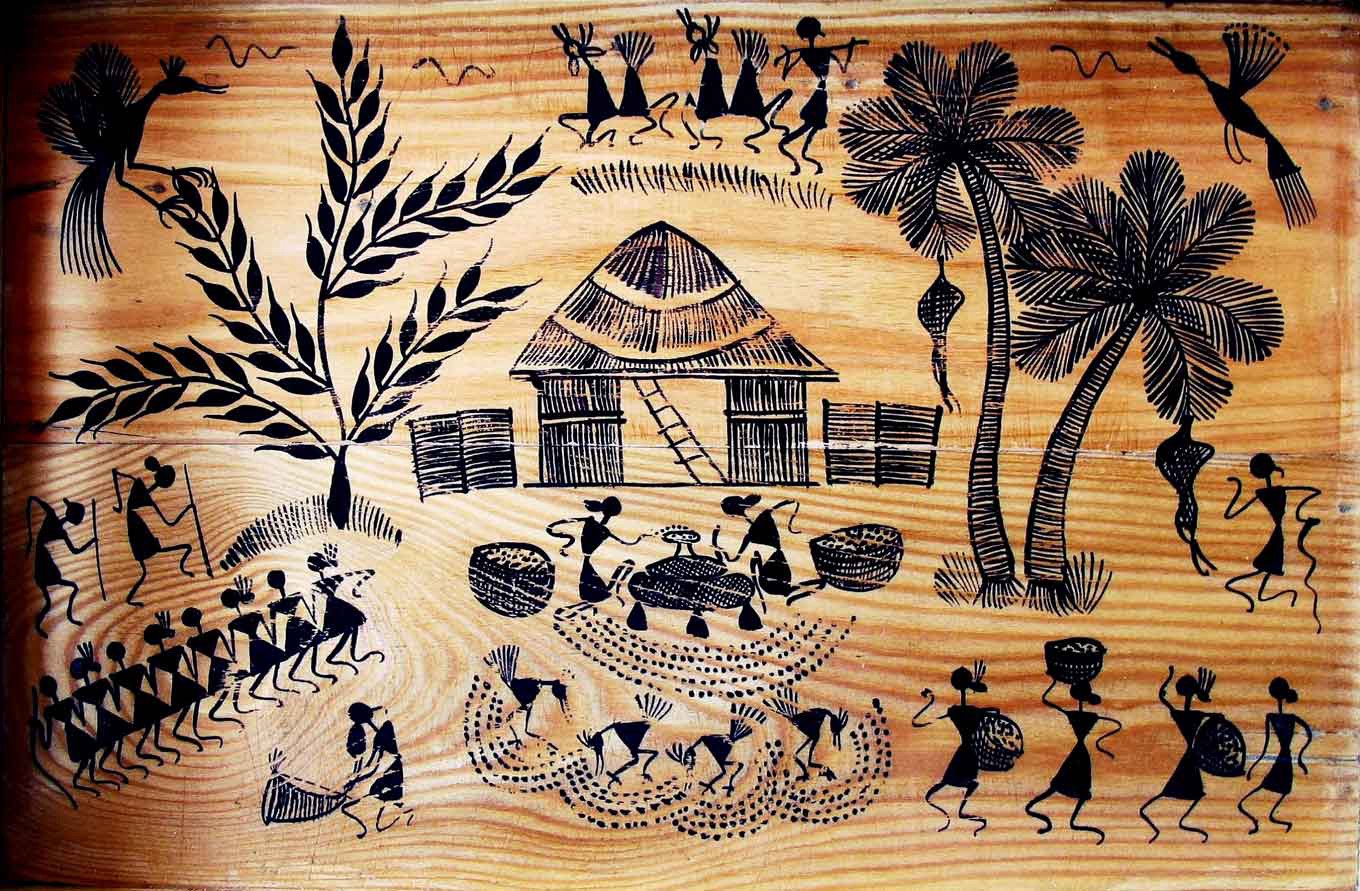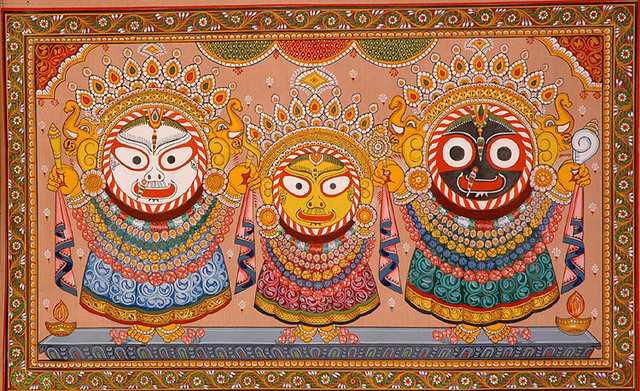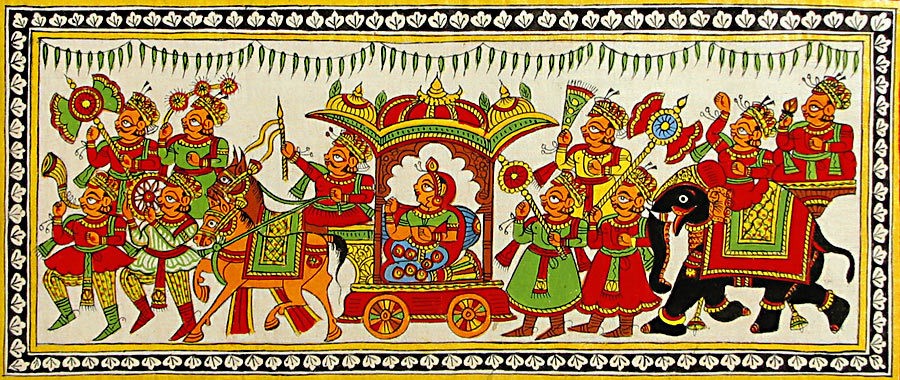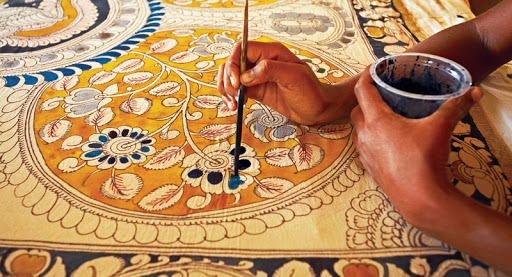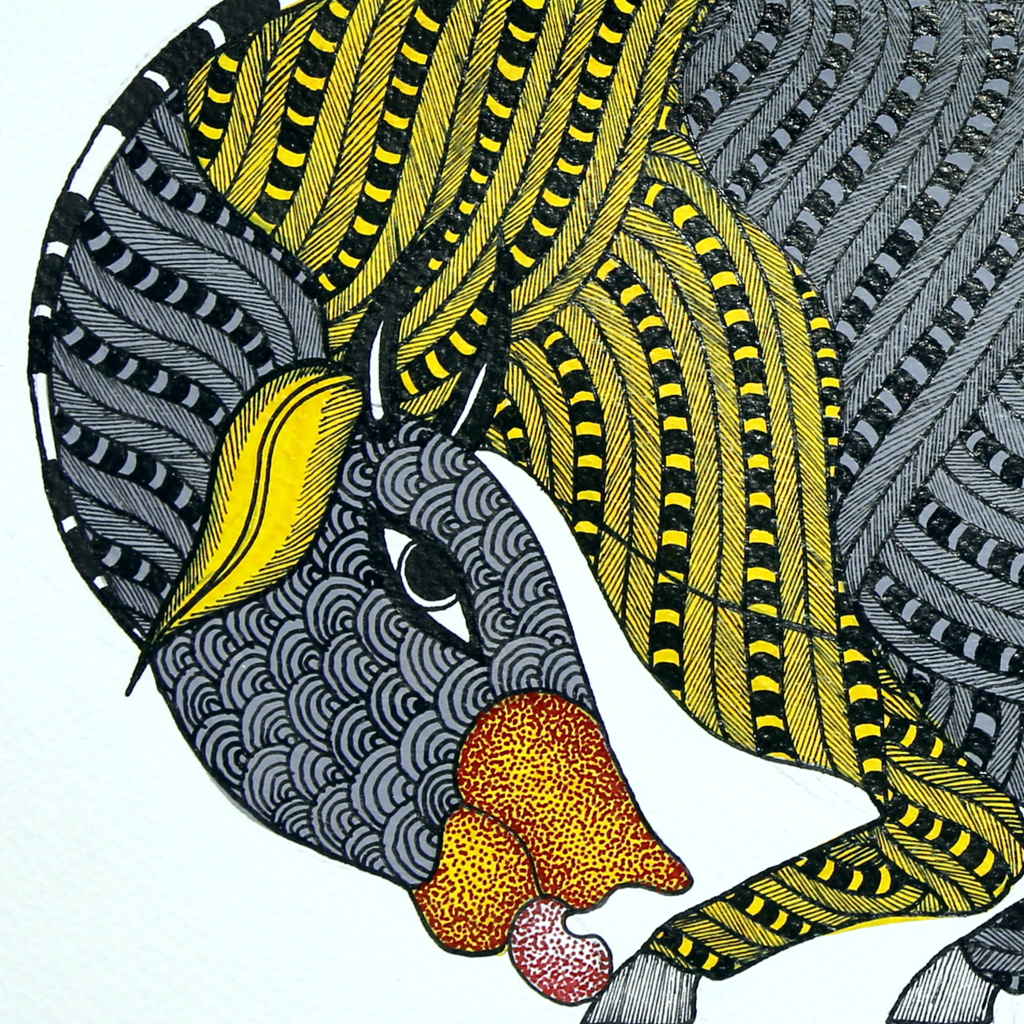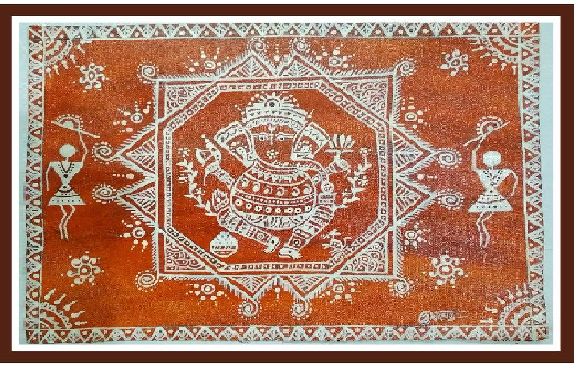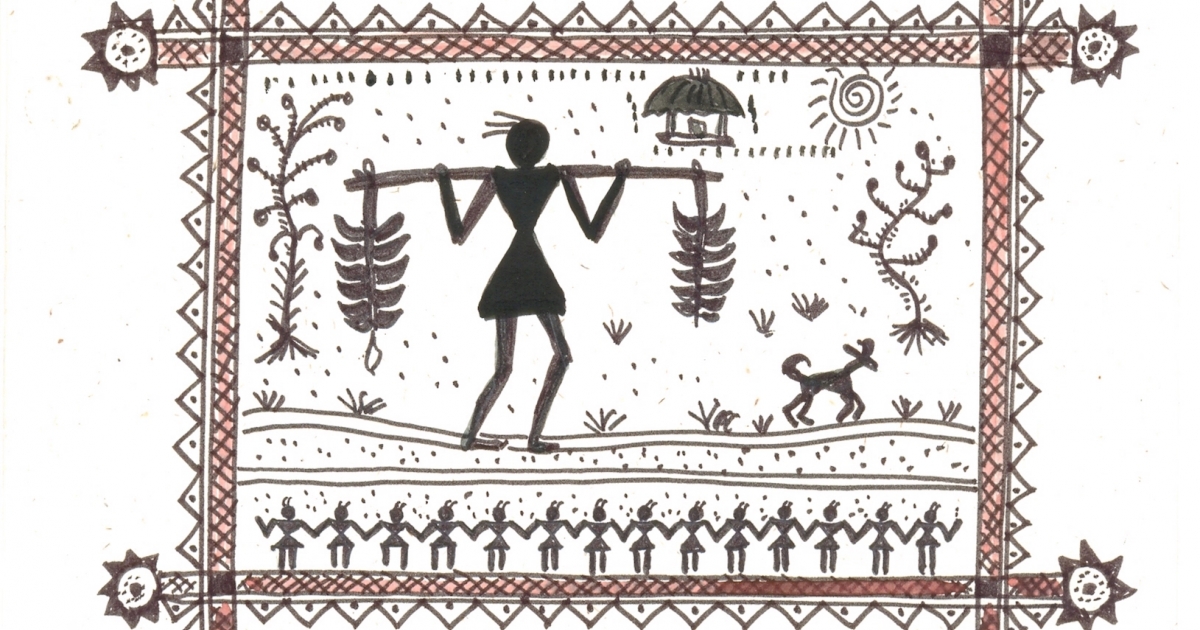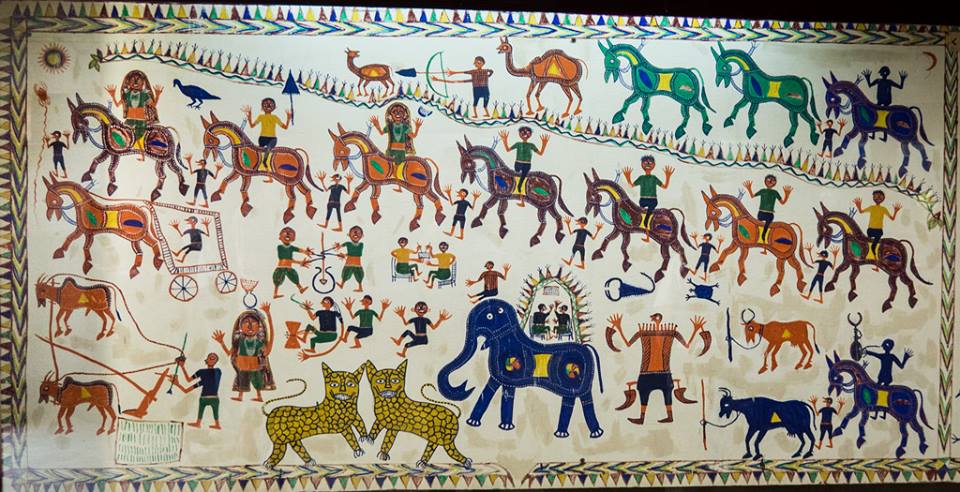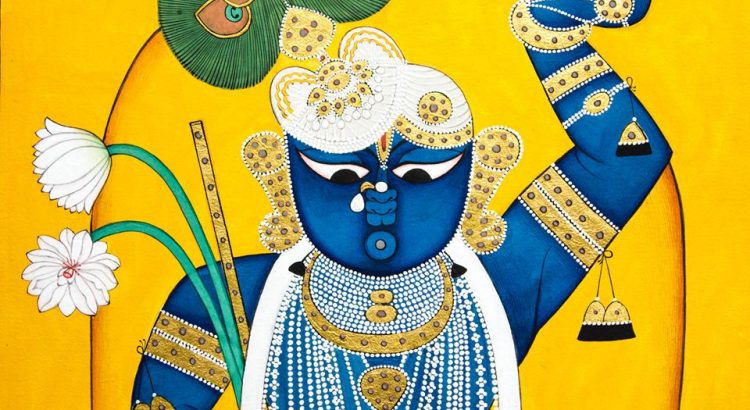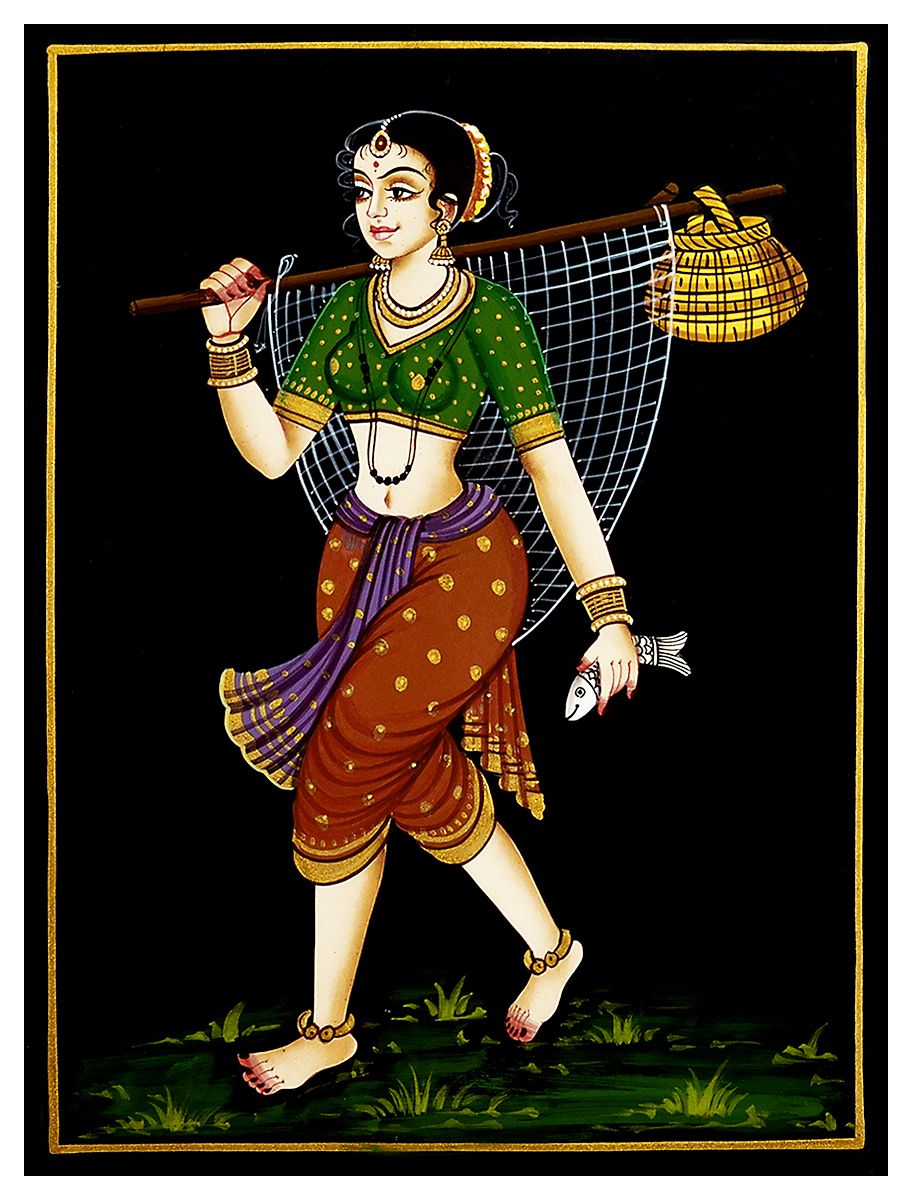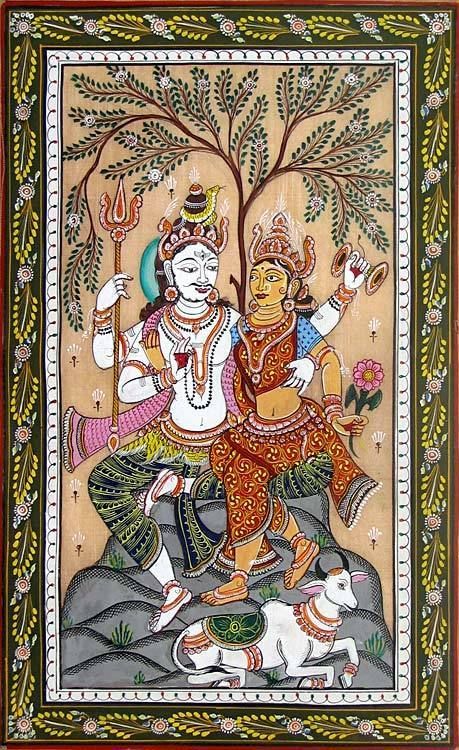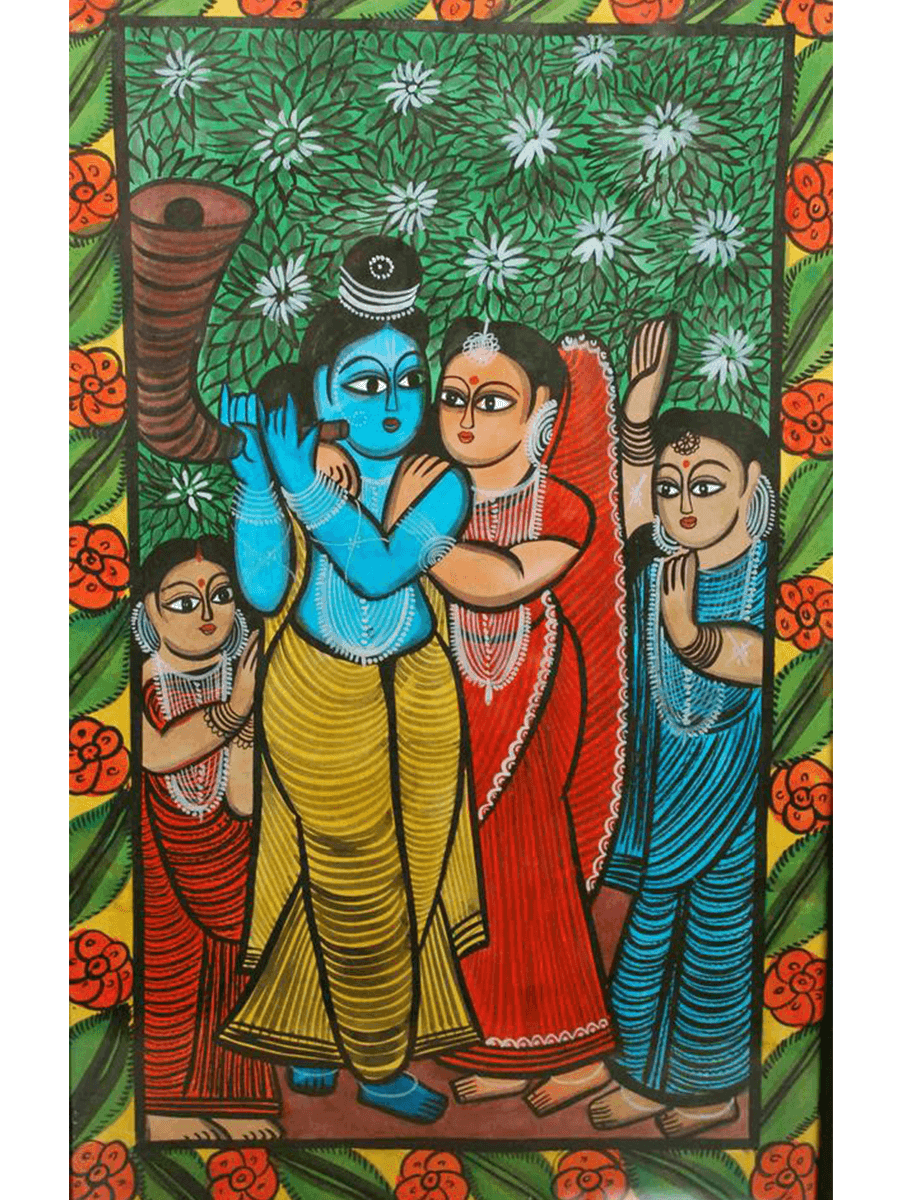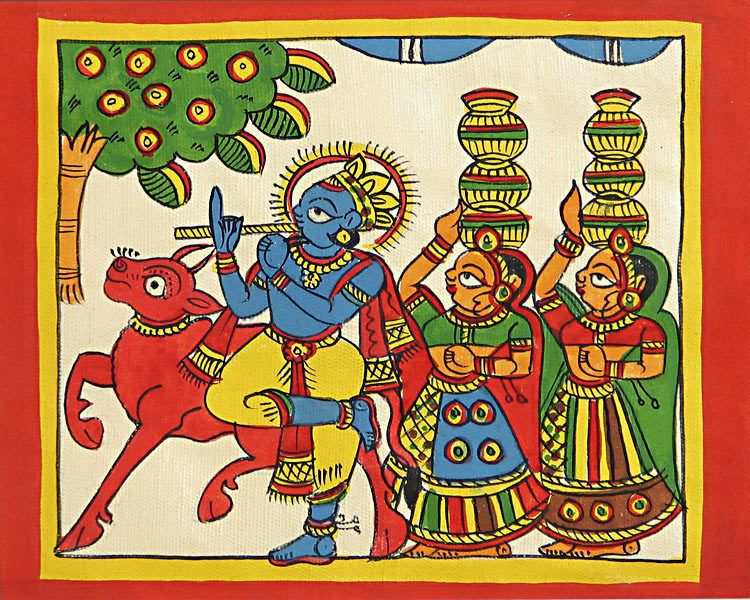Madhubani paintings of Bihar
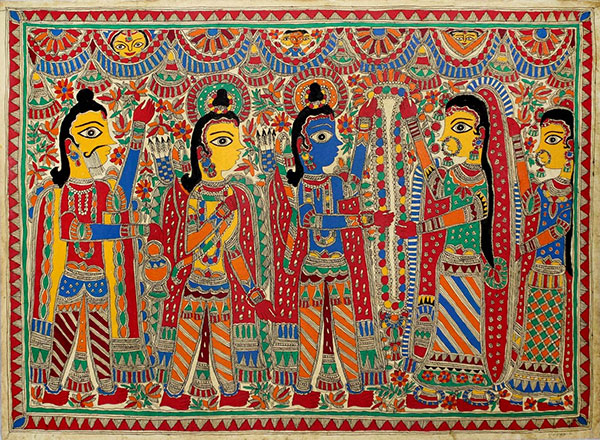
Perhaps one of the best known genre of Indian folk paintings are the Mithila (also called Madhubani) paintings from the Mithila region of Bihar state. The Madhubani in literal translation means ‘Forest of Honey’ (Madhu-honey, Bans-forest or woods).These paintings are basically religious in nature. The paintings are done by women predominantly at home, in anointed areas like the prayer room. Hindu mythology is the main theme in Madhubani Painting. It is an Indian living folk art inspired from mythological epics of Mahabharata and Ramayana. It is divine and prayful expression of unconditional surrender and thankfulness to the God. The contemporary art of Mithila painting was born in the early 1960’s, following the terrible Bihar famine. The women of Mithila were encouraged to apply their painting skills to paper as a means of supplementing their meager incomes. Once applied to a portable and thus more visible medium, the skill of Mithila women was quickly recognized. The work was enthusiastically bought by tourists and folk art collectors alike.
Madhubani, or Mithila painting, is a style of Indian painting practiced in the Mithila region of Bihar state, India. Madhubani paintings are characterized by geometric patterns and use twodimensional imagery, often depicting scenes from Hindu epics. The paintings commonly feature natural objects including the sun, moon and sacred plants. The picture space is entirely filled with designs of flowers, birds, animals and geometric shapes. The paint is made from a powdered rice paste and colored with natural dyes and pigments. Painters use fingers, twigs, brushes, nib pens and matchsticks to create their images. Madhubani painting has been traditionally practiced by the women of the Brahman, Dusadh and Kayastha communities. The paints were applied to freshly plastered mud walls and floors of huts for weddings and festivals. Now the art is also painted on cloth, handmade paper and canvas. During the severe drought in Bihar in 1966, female artists were encouraged to paint on paper by the All India Handicrafts Board so that their work could be marketed and sold. Since then the work has received international renown.

